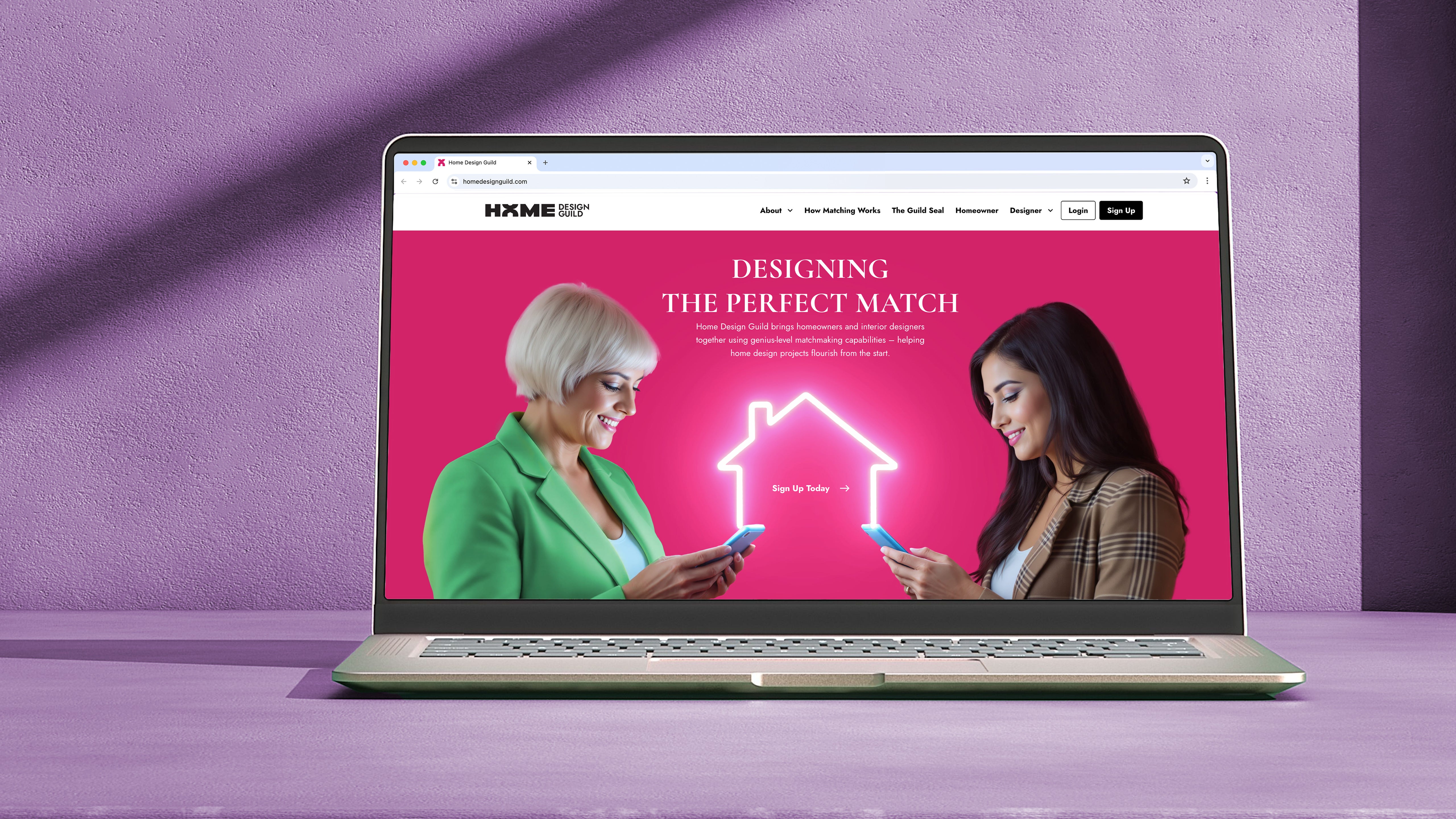A good client is hard to find—precisely the problem Jackie Paulsen is trying to solve. This month Paulsen, the former chief marketing officer of Summer Classics, is launching an online platform that looks to pair homeowners with designers. The site, Home Design Guild, takes a thorough approach to vetting both sides, a process its founder says will feel more like being set up by a veteran matchmaker than mindlessly scrolling. “I was telling [a friend] about this and she was like, ‘Oh, you’re Hinge for the home!’” she says.
The seed for Home Design Guild was planted eight years ago, when Paulsen—then the CMO of Theodore Alexander—attended an event thrown by the American Society of Interior Designers. In conversations with designers, she kept hitting on two pain points: Designers don’t have the bandwidth to focus on marketing, and clients come into the design process woefully uneducated.
Home Design Guild is an effort to right both of those wrongs. The platform’s approach leans heavily on vetting and education (it will provide guides to homeowners on everything from the design process to typical budgets and fee structures). Before sifting through portfolios, clients take a personality test, highlight some personal preferences and share information about their project. Only then do they get to the pretty pictures.
“When homeowners search for a designer online, how do they decide? The main factor is just scrolling through photos. But in reality, a photo of a great room by an interior designer is table stakes,” says Paulsen. “We wanted to flip the switch and really focus on the relationship. You match on personality, on budget, on how you want to do billing and the timeline. So the relationship starts on third base instead of first base.”
Another vetting point: Homeowners will have to pay $150 per year for a membership to access the site’s matching portal. Paulsen says the goal is both to convey the value of the service and to keep out tire-kickers who waste designers’ time.
For designers, Home Design Guild offers a range of membership options, starting at $5,500 annually. They can pay more to receive benefits like a profit-sharing arrangement (if they provide images of their work, they can make a cut of the homeowner fees), as well as access to a financing program they can offer to clients embarking on a big project. All members get a digital seal they can display on their site—an element Paulsen modeled after the famed Good Housekeeping seal of approval.
The site is currently only live for designers. Once a geographic region has 20 firms, Paulsen will turn it on for homeowners to browse. Designers don’t pay the full fee until their region is activated.
Florida-based designer Kristin Drohan is one of Home Design Guild’s earliest sign-ups. Her hope is that the platform will cut back on time wasted vetting homeowners who aren’t a fit. Moreover, she says it’s nice to have a third party asking clients what they really want. “The questions are pretty extensive—they go beyond what you’d typically do on a first screening phone call,” Drohan explains. “I feel like with somebody else asking those questions, it feels less intimidating to both the client and the designer. It’s having that extra layer of someone who is working in everyone’s best interest that feels more authentic.”
Matchmaking is not a new phenomenon in the design industry. In the 1980s and ’90s, Designer Previews offered a hands-on approach—owner Karen Fisher would connect clients and designers personally, aided only by a binder of photographs and a deep knowledge of the industry’s high end (in 2011, design journalist Donna Paul took over the business). The 21st century brought digital scale and venture money to the practice, as companies ranging from Houzz to Angie’s List to Homepolish connected designers with clients online. More recently, newcomer Tald has brought its own spin to the concept.
Many of the large-scale digital versions of designer matchmaking receive mixed results from the industry. Homepolish launched many designers’ careers. Then it flamed out. While Houzz has been an incredible source of lead gen for many, disputes over image rights—and a sense that the site had become too crowded—have caused some designers to sour on the platform.
Home Design Guild seems explicitly aimed at answering many of the industry complaints that have dogged sites like Houzz. Designers maintain ownership of their imagery, and Paulsen is planning to limit the number of designers listed in each geographical region so that no area can become overcrowded. Having worked closely with designers to develop various aspects of the site’s mechanics, she is confident that the platform is in line with how they think.
The other side of the equation is the bigger question: Can the site attract enough homeowners to deliver quality leads? Roughly 40 percent of every designer membership fee will be spent on digital marketing, a framework designed to drum up regional interest as the site gets off the ground. Paulsen, a veteran marketer, recognizes the challenge ahead, but she says the dollars involved are a big enough spend to generate meaningful traction.
“I’ve made a career out of understanding ROI and spending money smartly,” she says. “You get the benefit of having a marketer with 25 years of experience that knows this audience well.”
Maybe more to the point, the goal of the site is less to generate a ton of dubious leads than to deliver a handful of good ones. “[The challenge for designers is]: ‘I spend so much time educating leads, and then they ghost me,’” says Paulsen. “There are a plethora of tools focused on project management, and all of the associations are focused on education. But nobody in the industry is focused on improving the top of the funnel.”





























